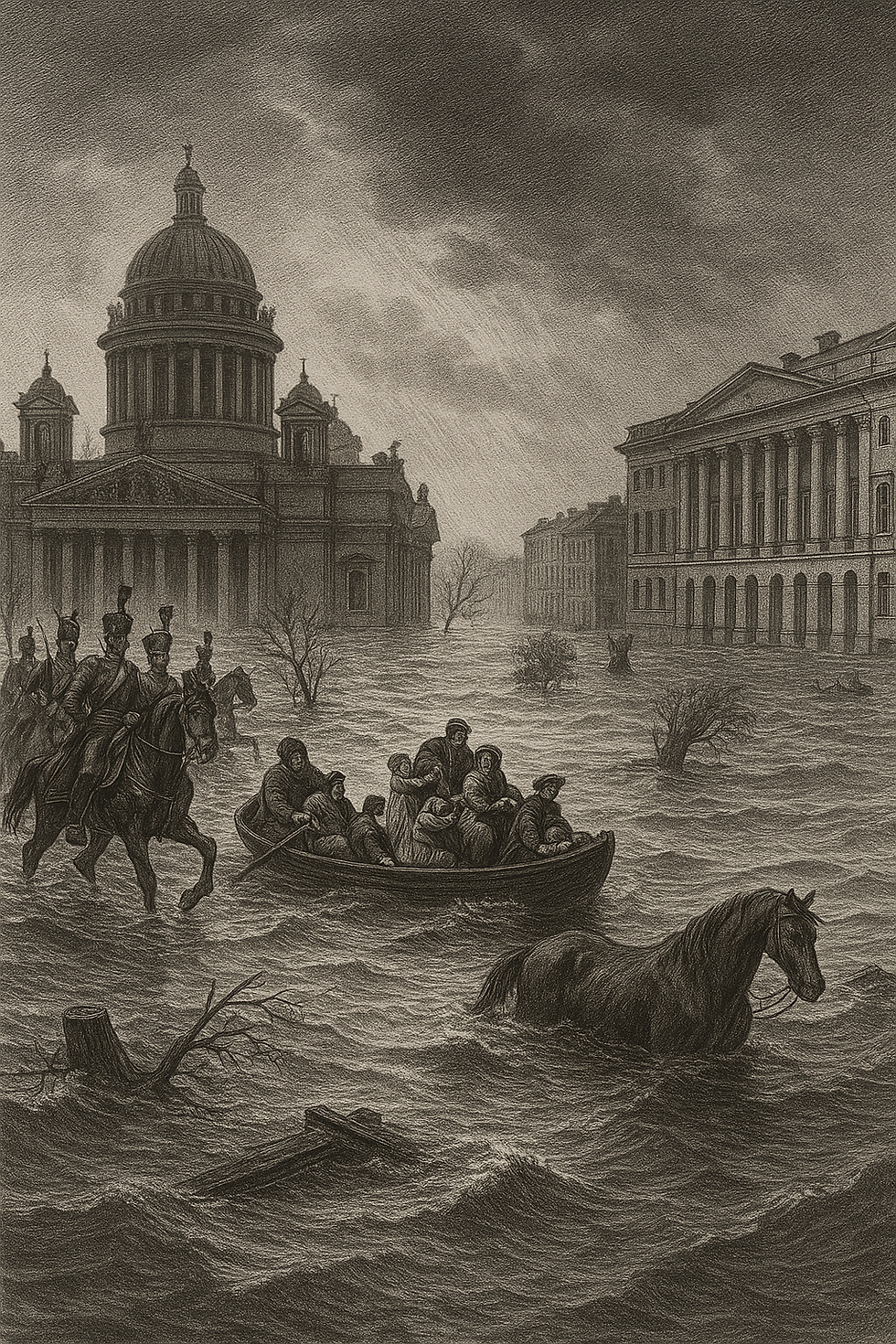The Flood of 1824: St. Petersburg That Drowned in Silence
- Александр Шамардин

- 4 нояб.
- 2 мин. чтения

On the night of November 18–19, 1824, St. Petersburg awoke to the distant roar of the sea. A violent southwest wind pushed the waters of the Gulf of Finland back into the Neva River, and the current suddenly reversed. The water began to rise — slowly at first, then with terrifying speed. Within hours, it spilled over the granite embankments and flooded the streets. By noon, the city had turned into a vast, churning sea. Boats floated down Nevsky Prospekt, carrying those who still hoped to survive.
The storm raged for two days. The water rose nearly four meters — higher than a man’s height. Officially, only a few hundred deaths were recorded. But private diaries and letters, untouched by censorship, spoke of thousands. Over four thousand buildings were destroyed, and entire families disappeared. When the floodwaters finally receded, they left behind mud, stench, and silence.
The empire was unprepared. There were no warnings, no rescue plans. Guards fled their posts; officials saved archives and valuables; ordinary citizens clung to rooftops. Some wrote with charcoal on the walls: “We were alive here.” Horses drowned in the streets, wagons floated past the palaces, and on Senate Square peasants rowed through the ruins looking for loved ones.
Then came the silence. Emperor Alexander I ordered that “panic and exaggeration” be avoided. Newspapers reported only a “minor rise of water.” Words like disaster, tragedy, or death were banned from print. Images showing destruction or bodies were confiscated. The empire decided that it was better to erase the flood from memory than admit the weakness of the state.
Architects later counted the damage: over 4,000 buildings destroyed, the Admiralty and warehouses flooded, entire quarters ruined. Yet official reports called it merely “an unfortunate incident.” In reality, it was one of the greatest disasters in Russian history — and one of the most censored.
When Nicholas I took the throne a year later, he ordered that the event be remembered only as “a divine trial.” A special commission compiled reports, but pages disappeared — lists of the dead, letters from survivors, petitions from families. Censors replaced words like horror and fear with test and fate. Thus, the empire turned catastrophe into obedience.
But memory survived. Writer Vladimir Dal, who helped rescue people, wrote: “I saw the death of a city.” A young Pushkin, then in exile, received letters about the flood — and later transformed them into The Bronze Horseman, his poem about a man destroyed by his own city. St. Petersburg became a symbol of pride and doom — a monument to human defiance against nature.
The flood of 1824 did not simply destroy the city — it exposed its truth. A city built on bones drowned once more, this time in silence. In the archives, dozens of petitions from victims still bear the mark “to be left without review.” The empire survived, but its people were ordered to forget.
Two centuries later, when the autumn wind rises over the Gulf, the Neva still swells. The water climbs the embankments, whispering the same words: the city remembers. For one night, in 1824, St. Petersburg drowned — not in water, but in silence.